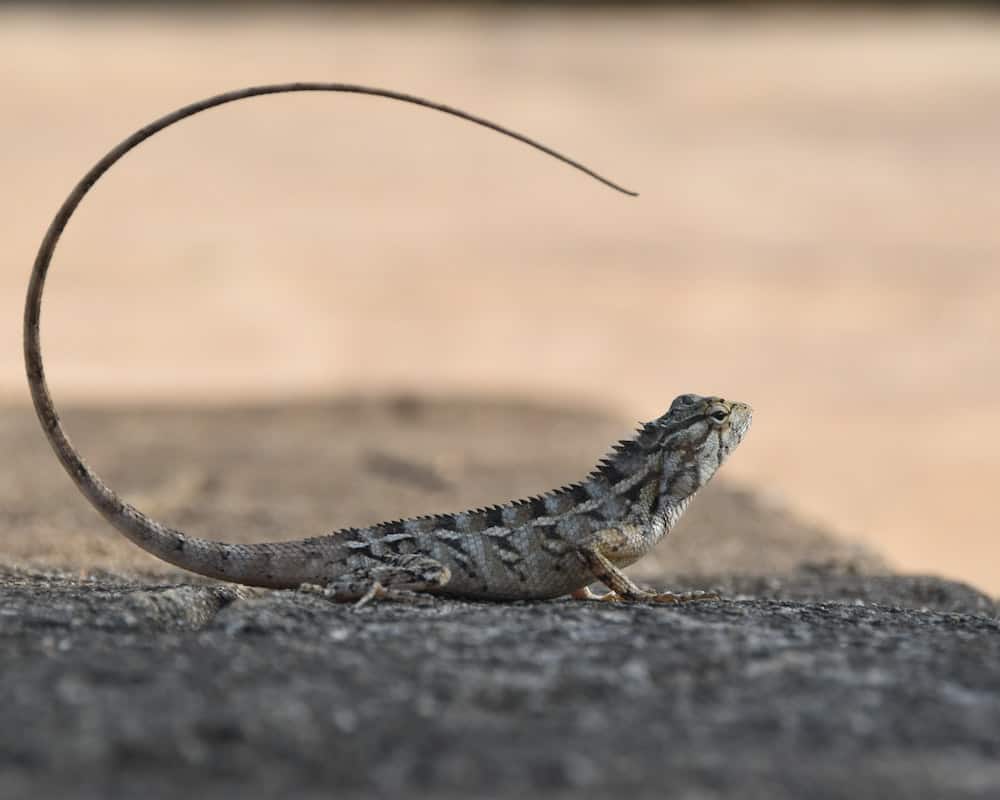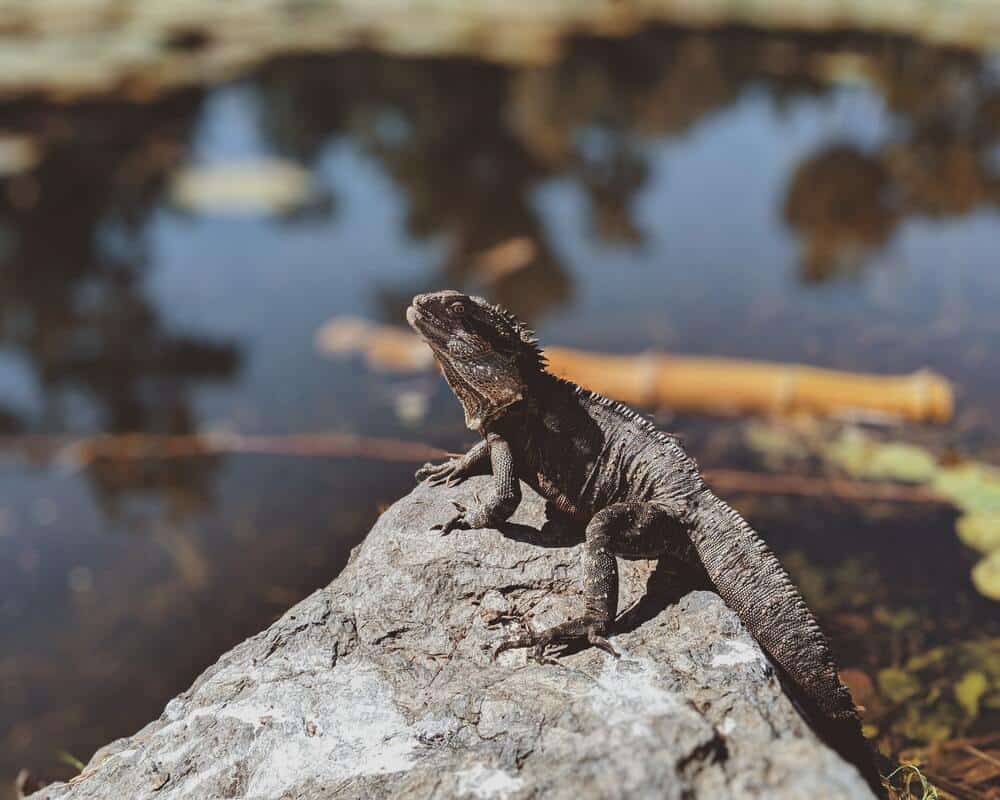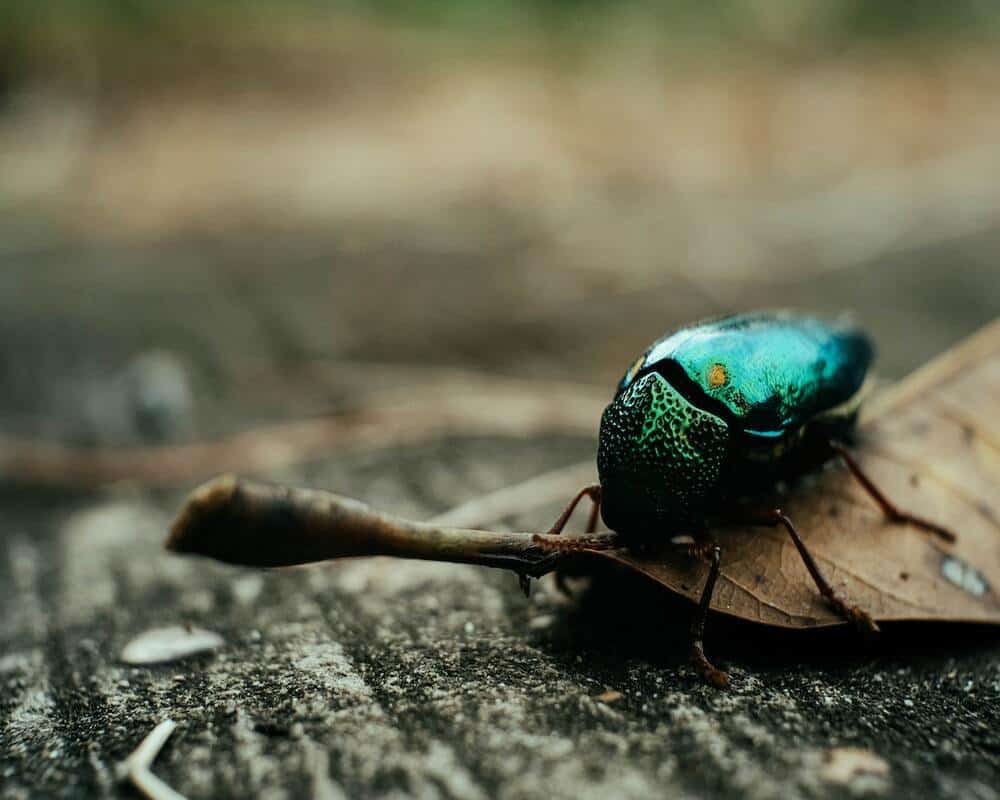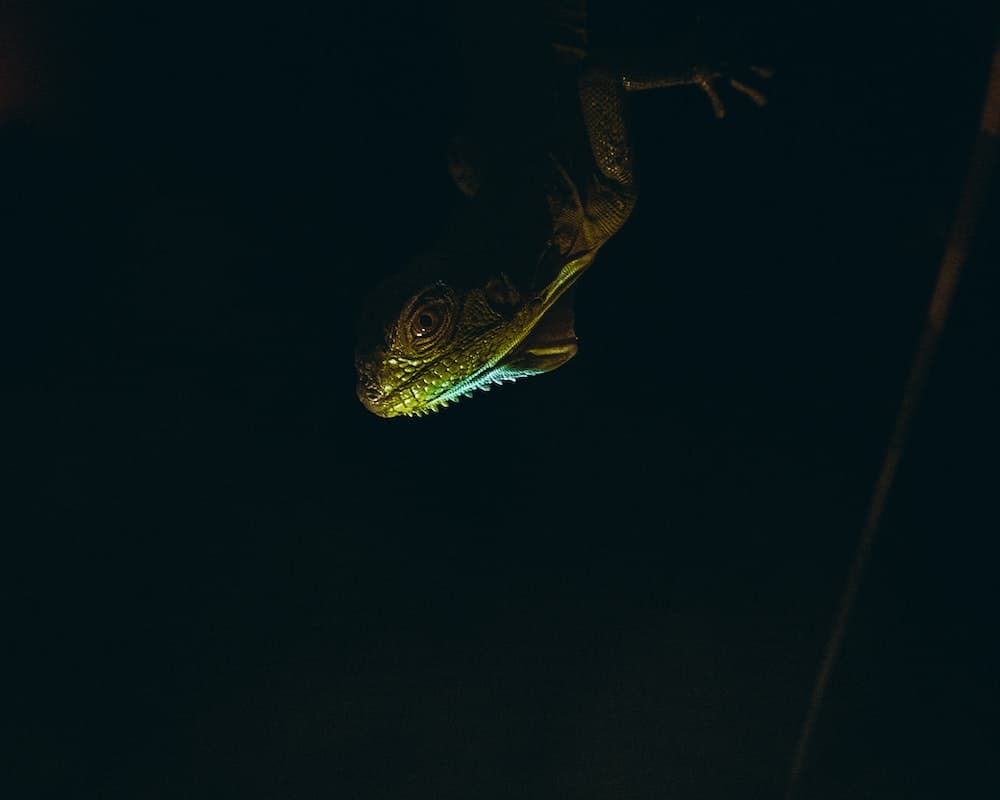So you recently bought a bearded dragon and are wondering, do bearded dragons tails grow back? Are you unsure if it has the ability like most other reptiles to regrow its lost tail?
Bearded dragons do not have the ability to regrow their tails once lost. They also do not have the ability to drop their tails when threatened. Unlike most lizards, they lack the genetic requirement for regrowing their tail or limbs.
Why Can Some Lizards Lose Their Tail and Regrow It?
Most reptiles live in the wild where they are constantly exposed to threats from predators or other wildlife. In order to save themselves, they have a biological technique called caudal autotomy.
Caudal autotomy is the voluntary self-amputation of their tails. This is a survival mechanism. The species of reptiles that can employ caudal autotomy have specific genes which can also regrow their tails. Even in situations where the tails of such reptiles get amputated, they are able to regrow their tails.
Why Bearded Dragons Can’t Regrow Their Tails?
Bearded dragons lack the survival mechanism of caudal autotomy. This is why they also lack the biological mechanism which could have helped them regrow their tails. If threatened by a predator, they use other diversionary techniques to escape the predator.
Facts About The Tail of the Bearded Dragon
Following are some of the reasons what purpose the tail of a bearded dragon serves:
Maintaining Balance
Bearded dragons originate from arid dry regions. They are semi-arboreal in nature and use their tails mostly for balancing while climbing up a tree or a plant.
Their tails are also helpful to balance them when they are walking or normally holding any position.
The tail of a bearded dragon is also helpful when they are running from a threat. They can run up to nine miles per hour and their tail is important for them to maintain their balance.
Communicating with Other Beardies
The tail of a bearded dragon is also helpful to communicate certain signals like excitement, alertness, stress, curiosity, or simply sometimes relaxation while basking.
Their tail typically goes up and the owner upon investigating the cause can tell the exact emotion being signaled.
Signaling Mating
Apart from bobbing their heads, bearded dragons also use their tails to show interest in the opposite gender. They may use slight twitching of the tails to indicate interest in mating.
Displaying Dominance
Bearded dragons are territorial in nature which means they like to guard their territories. For this reason and others, they need to display dominance sometimes in front of other bearded dragons if they are sharing the same enclosure.
Enhancing Threatening Appearance
Bearded dragons have long tails. This tail is used to make it look threatening and therefore avoids any bullying or intimidation from other bearded dragons in case they are in the same enclosure.
Top 5 Reasons Why Bearded Dragons Can Lose Their Tail
Despite not having the ability to drop their tails, bearded dragons can, unfortunately, lose their tails. Let us see some of the reasons:
- Bite or Attacks from Other Animals
Bearded dragons prefer solitude. They are not social creatures. Along with this they also happen to be territorial in nature and fiercely guard their territories.
So, if you have housed two or more bearded dragons in the terrarium, chances are there could be territorial wars and there one or the other could mutilate the tail of the other in an act of showing dominance.
Check out this video to get an idea of how dominating bearded dragons, especially the male ones can be!
Another common reason for the tail to get amputated is an attack by other pets or animals. If there is a cat in the house, it can attack your bearded dragon in an act of aggression. Dogs can attack bearded dragons too. But dogs and bearded dragons can bond often. Yet the risk of a bearded dragon losing its tail while playing with other pets in the house is a likelihood.
- Accidents in Enclosure
Ensuring that your pet enclosure consists of the right decor is important. However, it is important to set up heavy objects like rocks, plants, and basking logs in a pet-safe way.
If not placed in safe positions, they can land up on your bearded dragon, injuring it, and sometimes causing it to lose its tail.
- Tail Rot
Tail rot is a grave condition in which the tail of your bearded dragon can get infected by bacteria. Once infected, the tail will start rotting, shriveling the tail and eventually causing it to fall off.
The longer the disease of tail rot remains untreated the more damage it can cause. It can also lead to the terrible outcome of your bearded dragon losing its entire tail.
Bacterial infection can either be caused by lower immunity caused by an inappropriate diet. Unsuitable living conditions like an increase in humidity in the pet enclosure, and unhygienic tank conditions can also lead to many bacterial infections.
Live insects offered as feed, left for a long time in the pet enclosure can also end up attacking your bearded dragon and cause bacterial infections to the tail, thereby causing tail rot.
You can check out the tail rot process in this video.
- Problems in Shedding
Shedding is a painful and stressful process for bearded dragons. If the shedding process does not go smoothly, and some of the shed skin dries around the tail region, it can obstruct the flow of blood to the tail.
This can cause the tail to slowly rot away by becoming black or gray and eventually drop off.
- Accidents While Handling Bearded Dragons
If you are a new owner, you can accidentally cause the tail to snap if you handle your bearded dragon too roughly.
Top 5 Ways to Prevent Bearded Dragons From Losing Their Tail
Bearded dragons cannot regrow their tails. It is therefore your responsibility to ensure that they do not lose their tails by accident or disease.
- Preventing Tail Loss While Interaction with Other Pets
As a rule of thumb, avoid housing two or more bearded dragons in the same enclosure. This will avoid a lot of territorial fights and acts of aggression and will prevent any chances of tail bites or tail loss. If you have to get two bearded dragons, house them in different enclosures.
While introducing your pet bearded dragon to other pets, keep a close eye on your pets and their behavior and avoid any accidents or attacks on your bearded dragon.
- Preventing Accidents in the Enclosure
Ensure that the terrarium housing your bearded dragon poses no hazards caused by heavy objects. Use lighter and safer substitutes while planning the decor of the terrarium.
Ensure the terrarium also has doors that do not catch the tail while shutting the door which could accidentally cause the loss of the tail for your bearded dragon.
- Timely Treatment of Tail Rot
The key to preventing tail loss caused by tail rot is timely treatment. The sooner your bearded dragon receives medical attention, the chances of it losing its tail reduce significantly.
Tail rot is most commonly observed by the darkening and shrinking of a part of the tail. Make sure to take your pet to the veterinarian immediately upon seeing these symptoms. If ignored, it can cause tail loss for your bearded dragon.
- Providing a Good Diet and Habitable Conditions
A diet rich in vital nutrients increases the immunity of your bearded dragon and therefore makes it less susceptible to bacterial infections. Preventing excess humidity and maintaining a good habitable condition in the tank will also avoid any unnecessary bacterial growth in the tank.
Do not keep any live feed for a longer duration in the pet enclosure as the insects can attack your bearded dragon. Remove the live feed within a few minutes after offering your pet.
- Learning How to Handle Your Bearded Dragon
If you have never handled a bearded dragon before, it is best to learn how to handle a bearded dragon. You can consult a vet on safe ways to handle your bearded dragon. Do not ever grab hold of it by its tail as it may snap.
If you’re a bit anxious about handling your bearded dragon, this video might help you out.
What Should You Do If Your Bearded Dragon Loses Its Tail?
In an unfortunate scenario, if your bearded dragon does end up losing its tail, you should do the following immediately:
- The first thing to do is stop any blood loss from occurring.
- Use a clean gauze to wipe any blood and gently put some pressure to stop further bleeding. While doing so, be as gentle as you can as your bearded dragon is already in pain and probably scared too.
- Once done, immediately consult a veterinary doctor for further treatment. The vet will know how to treat your bearded dragon and prevent any further complications.
- Make sure you give the prescribed treatment to prevent any further bacterial infections.




